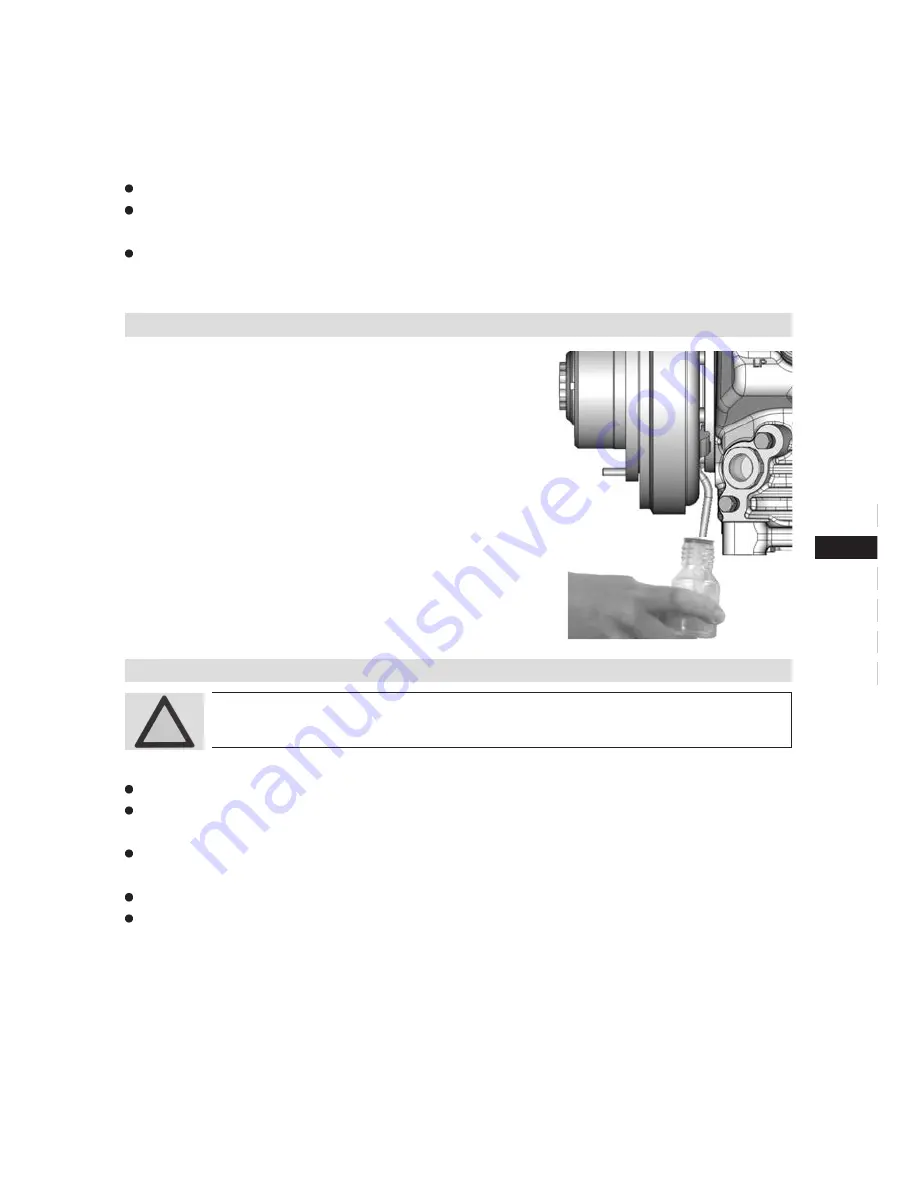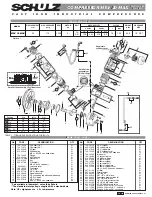
17
09704-06.2016-DGbFIT
rCn
D
GB
F
I
TR
CN
5
|
Commissioning
As changing the shaft seal involves opening the refrigerant
circuit, this is recommended only if the seal is losing
refrigerant. Replacing the shaft seal is described in the spare
part kit concerned.
Emptying the oil reservoir:
The oil reservoir can be emptied
very simple without having to dismantle the clutch and/or
belt drive. It is recommended that this is done at the same
time as the air-conditioning maintenance and motor service.
To proceed, detach the oil hose from the bracket, remove the
sealing plug and drain the oil into a collecting vessel. After
emptying, reseal the oil hose and clamp it into the bracket.
Dispose of the used oil in accordance with national
regulations.
The compressor shaft is sealed to outside using a shaft seal. The sealing element rotates with the
shaft.
The following is especially important to ensuring fault-free operation:
The complete refrigerant circuit must be correctly executed and clean inside.
Heavy shocks and vibrations to the shaft as well as continuous cyclic operation are to be
avoided.
The sealing surfaces can stick together during prolonged downtimes (e.g. winter). Therefore, run
the system every 4 weeks for 10 minutes.
5.8 Shaft seal, emptying the oil reservoir
5.9 Avoiding liquid shocks
ATTENTION! Slugging can damage the compressor and cause refrigerant
to leak.
To prevent liquid shocks:
The complete refrigeration plant must be correctly designed and executed.
The capacities of all components must be compatible (particularly evaporator and expansion
valve).
Suction gas superheating at the evaporator output should be at least 7 – 10 K (check setting
of the expansion valve).
The system must reach a state of equilibrium.
Particularly in critical systems (e.g. several evaporator points), suitable measures, e.g.
use of liquid traps, solenoid valve in the liquid line, etc. are recommended.
Fig. 18










































